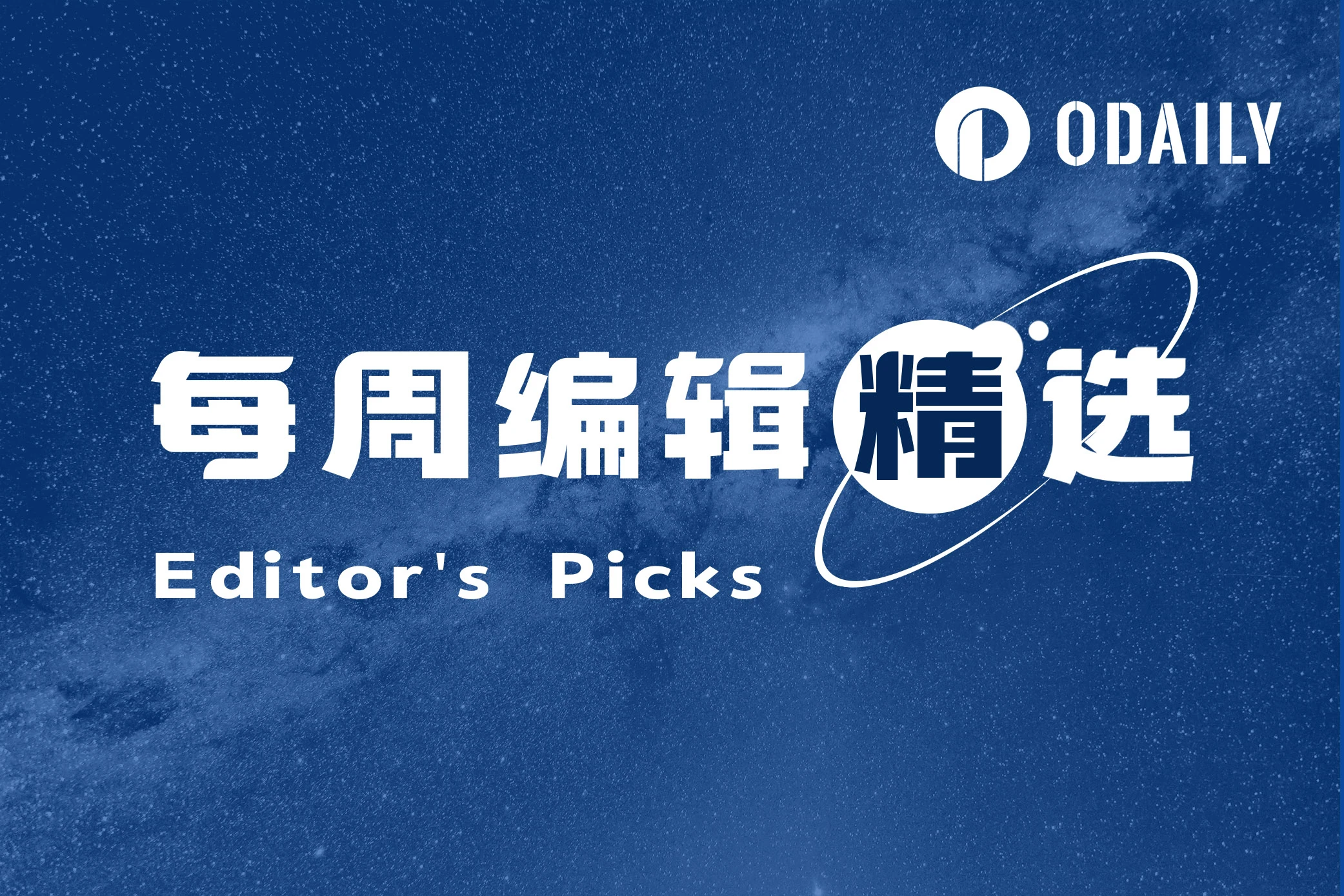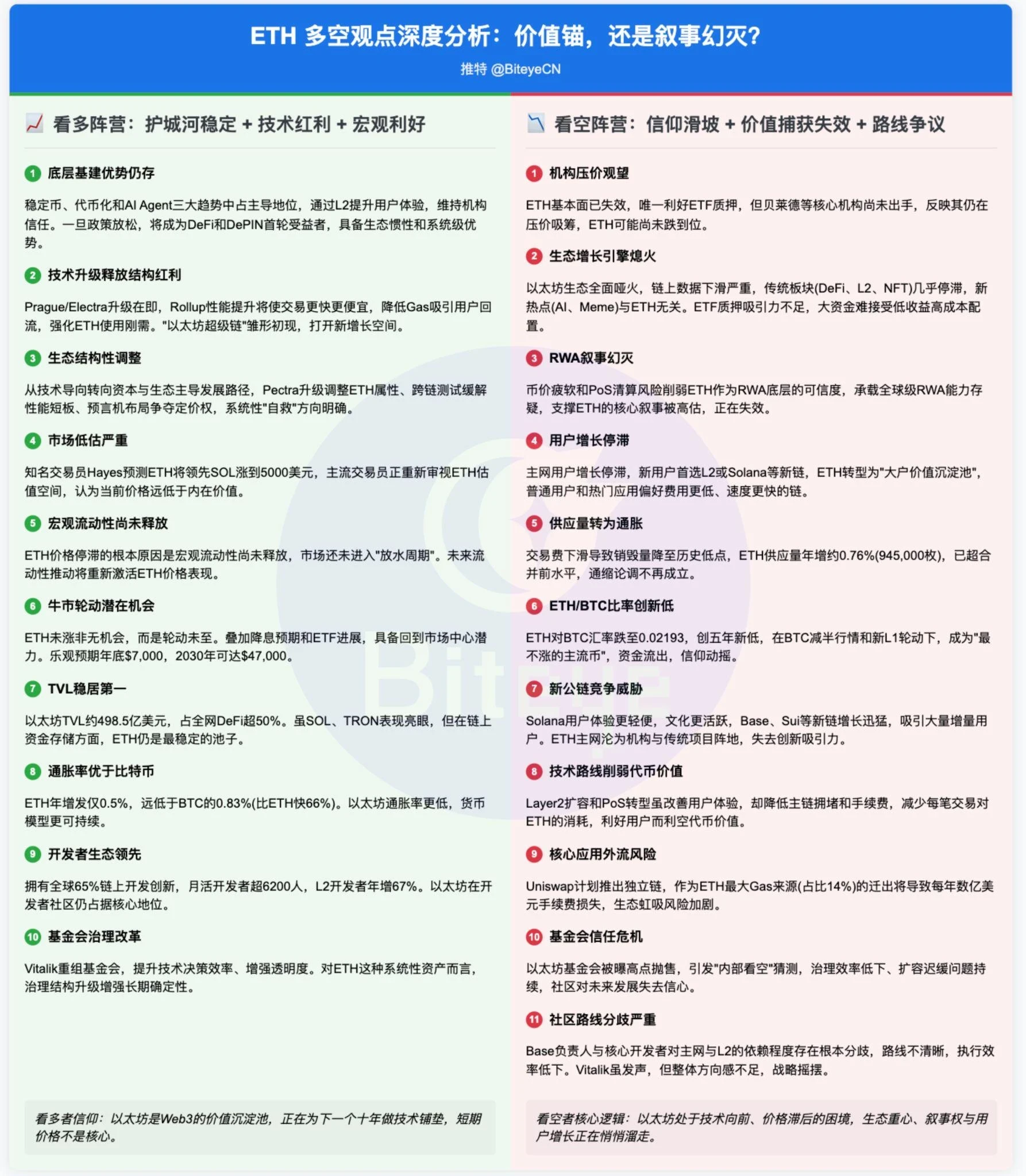Weekly Editors Picks is a functional column of Odaily Planet Daily. In addition to covering a large amount of real-time information every week, Planet Daily also publishes a lot of high-quality in-depth analysis content, but they may be hidden in the information flow and hot news, and pass you by.
Therefore, every Saturday, our editorial department will select some high-quality articles that are worth spending time reading and collecting from the content published in the past 7 days, and bring new inspiration to you in the crypto world from the perspectives of data analysis, industry judgment, and opinion output.
Now, come and read with us:

Investment and Entrepreneurship
Learning from traditional companies, how do crypto projects distribute profits?
Revenue is not an end, but a means to long-term viability. Understanding how to allocate FCF, such as when to reinvest it for growth, when to share it with token holders, and the best way to allocate it (such as buybacks or dividends), these decisions may well determine the success or failure of founders who aim to create lasting value.
Equity market reference is helpful in making these decisions effectively. Traditional companies often distribute FCF through dividends and buybacks. Factors such as company maturity, industry, profitability, growth potential, market conditions, and shareholder expectations all influence these decisions.
Buybacks have become more popular than dividends lately. Buybacks are more flexible, while dividends are sticky. Even direct revenue sharing models must be done carefully to avoid being classified as securities, balancing rewarding token holders with complying with regulatory requirements. Have sufficient funds in reserve before initiating buybacks or dividends.
Projects need to give token holders good reasons to stick around and non-holders reasons to buy. Strong IR practices provide strategic advantages beyond transparency. They reduce volatility by reducing information asymmetry, expand the investor base by making institutional capital more accessible, foster long-term holders who fully understand operations and can hold on to their positions through market cycles, and build community trust that can help projects weather difficult times.
The alienation of the cryptocurrency world: When “selling coins” becomes the only business
Projects no longer pursue users and products, and VCs no longer study trends and tracks. The entire market is left with only one voice shouting: How to sell the coins? Today, the innovation path of the cryptocurrency circle has become: Tell a good story → quickly package → find connections to list → cash out and run away.
Market participants are extremely homogeneous, and they are all trying to squeeze the increasingly scarce stock of funds in the cryptocurrency circle. The top resource parties (top projects, large exchanges and their listing departments, MMs and agencies with strong resources) have formed an unbreakable community of interests. The blood of the cryptocurrency circle is input from LP to VC, from VC to top projects, and from the capillaries of retail investors in the secondary market, feeding the parasitic organizations of these communities of interests, and then growing bigger and bigger.
Over-betting on public chains, crypto VCs are limiting the future of the crypto industry
Economic incentives still favor investing in new L1 and L2 rather than protocols.
This imbalance can be addressed in three ways:
Protocol valuations must rise: The market needs to reflect the actual value and utility of the top protocols.
L1/L2 investments must decrease: If the chain’s valuation drops, capital allocation will naturally shift toward the protocol.
Protocols become their own chains: This trend started with the recent actions of HyperLiquid and Uniswap.
Berachain founder reflects on entrepreneurship: Don’t let tokens drag down your project
The article discusses the recent phenomenon of multiple projects issuing tokens in the Berachain ecosystem, and reminds founders not to issue tokens blindly. Tokens should drive growth when the product reaches market fit, otherwise it may affect user adoption. In a sluggish market environment and limited community funds, falling token prices will damage the product image. Token issuance should avoid simultaneous competition, ensure reasonable valuation, and focus on long-term value rather than short-term exit. The author supports the development of Berachain, but emphasizes that success requires patience and strategy, and recommends that the team prioritize profitability and user growth.
Policies and Regulations
Web3 lawyer’s latest interpretation: Can the DAO organization serve as the RWA coin issuer?
The UAE and the United States have clear laws and regulations on DAO organizations. Countries such as the Marshall Islands and Malta have also issued laws and regulations related to DAO organizations.
If a DAO organization only exists on the chain and there is no corresponding legal entity off the chain, then such a DAO organization cannot directly serve as the token issuer of the RWA project, and it is necessary to legally wrap the DAO in the early stage of the project. This is because the on-chain DAO organization, as the issuer of the currency, will face tax risks and will most likely fail to pass the financial compliance review of relevant financial institutions. The so-called legal wrapping specifically means setting up a separate legal entity such as a limited liability company or foundation, and transferring some of the functions of the DAO organization to the off-chain legal entity through an agreement or a specific architecture design, and finally completing the currency issuance.
Stablecoins
The hottest trend: How can stablecoin startups generate revenue?
While the stablecoin market leaders are “transactional” and barely scratch the surface of a potentially much larger use case, the underappreciated narrative is that of “investment” stablecoins, driven by a broader range of crypto-native returns. They are the perfect conduit for stable crypto returns, replacing traditional treasuries. Cryptocurrencies can be an excellent source of alpha, and the asset base is global. However, there are still two major barriers that hold this potential back: scalability and risk.
To improve the scalability of the sources of income that support stablecoin returns, you need to choose the most scalable sources and increase the number of income sources - Delta neutral strategies as support are a good source of income, which mainly rely on perpetual futures, and the futures market is very large. In addition, more diversification across underlying assets and exchanges is needed.
The risk control solution is to isolate the risk into a separate tool that will absorb possible losses, that is, sell these risks to the market in the form of high-yield RLP tokens.
By enabling third parties to participate in yield generation (as strategy originators or risk managers), Resolv is expanding network effects and building a “horizontal moat”.
There are two main types of execution in DeFi right now: authoritarian and committee. This article introduces a third type - the self-reinforcing yield mechanism that the Cap team is pioneering. Type III stablecoins represent a move away from subjective human decision-making and toward an automated system of shared rewards and penalties. In a sense, they are more like a protocol than a traditional hedge fund. The process of capital allocation and recourse processing by human decision-makers is replaced by unchangeable rules set by smart contracts.
The core motivation for adopting Category III stablecoins is improved security and reduced latency. Users are protected at the smart contract level, and can inspect the code to verify the recourse mechanism when the strategy fails. In addition, the response speed to strategy switching in the open market is greatly accelerated, and it can quickly adjust to changes in market dynamics. This allows Category III stablecoins to fully leverage the power of the market and quickly deploy multiple parallel yield strategies.
Web3s new Tale of Two Cities: Stablecoins and Money Market Funds
The regulatory battle over stablecoins is similar to what money market funds (MMFs) experienced half a century ago. MMFs initially provided cash management for companies, but were criticized for problems such as lack of deposit insurance and susceptibility to bank runs, which affected bank stability and monetary policy. Despite this, MMF assets now exceed $7.2 trillion. The 2008 financial crisis led to the collapse of the Reserve Fund, and the SEC is still pushing for MMF regulatory reforms in 2023. The history of MMFs suggests that stablecoins may experience similar regulatory challenges, but may eventually become an important part of the financial system.
Circle IPO aims for a valuation of $5 billion. Is there a concept stock for stablecoins?
To understand Circles IPO plan, we have to mention the successful experience of its partner Coinbase. The relationship between Coinbase and Circle is more than just ordinary cooperation. In 2018, the two companies jointly launched USDC. As Circles core product, the issuance and management of USDC cannot be separated from the support of Coinbase, and Coinbase also vigorously promotes USDC through its platform.
Currently, USDT is the largest cryptocurrency with a market value of about $140 billion, followed by USDC with $60 billion. Although there is still a gap between the two in market share, Circle is gradually narrowing the gap with Tether with its compliance and transparency.
The Stablecoin Act is fueling the stablecoin IPO. Circles IPO may become a weather vane for the development of the stablecoin industry. As the global regulatory environment gradually becomes clearer, stablecoins are ushering in a golden age of compliance and institutionalization.
Also recommended: 15 Questions and 15 Answers on the Latest US Stablecoin Draft .
Airdrop Opportunities and Interaction Guide
Initias airdrop strategy is to reject PUA, reject showmanship, return to simple user operation thinking, and let users feel long-termism.
In the current industry, a good airdrop is nothing more than: transparent (verifiable rules), quantifiable contributions (fairness), accumulative benefits (long-termism), diffusible value (ecological binding), and fulfilled promises (integrity).
A deeper consideration is whether project owners and capital view users as traffic or assets. If you do not operate users as assets, but merely as traffic, then this opposition, distortion and even rights protection will not stop.
The crypto industry is still in its cold start phase, and airdrops remain a necessary market tool.
Also recommended: What did Initia do right with the airdrop? The CEO breaks down the details to accurately incentivize real contributors Raising over $18.75 million, how to get Infrared, the only leader in Berachain Interactive tutorial | SOON endorsed by CZ, how to participate in BigBang and NFT plans? Decoding Wayfinders potential airdrop: Is it too late to interact now? What are the ways to participate? Airdrop Weekly Report | Ethena Season 3 airdrop will be open for inquiry next week; LayerZero CEO reveals the second round of airdrop plan (3.24-3.30)
Bitcoin Ecosystem
Bitcoin punks and .sats domains inspired the creation of BRC-20. Domo felt the pressure after BRC-20 became popular.
When Casey made a major upgrade to the Ordinals protocol, Domos primary consideration was security. Some new upgrades did not improve the protocol and would bring us risks. In the end, the indexer dispute caused turmoil, perhaps due to lack of communication, but UniSat compromised. I am grateful for everyones cooperation. Everyone agreed that any form of fork was not in the best interest of the community, and then found a solution that suited everyones needs and interests. Later, in order to avoid similar situations from happening again, we created the Layer 1 Foundation. The best use of this organization is to establish some kind of governance rules so that we can handle these decisions in a smarter way in the future. UniSat and Best In Slot are both the main maintainers of this organization and collaborate with each other. I am very satisfied with the result. This is how open source protocols should be. Over time, the founders ideas are not necessarily the best. It is healthy for better technology, more experience, and more people committed to the protocol to join.
The current priority is to keep BRC-20 assets alive.
Programmable modules and Single step transfer can make BRC-20 better integrated into other ecosystems, so that users do not have to hang on a tree of BRC20, making the assets being created the objects that need to be supported, rather than the standard itself. Single-step transfer can abstract wallets and solve the problem of the number of Bitcoin wallets. It will not only make the user experience better, but it will make BRC20 easier to connect to other systems than before. Many current cross-chain bridge designs are still too complicated for users. Users are accustomed to sending UTXO and experience similar to simple cross-chain bridge locking.
Ethereum and Scaling
Although the price of ETH is sluggish, the ecosystem is highly decentralized, and there are still old investors and latecomers who stick to the Ethereum ecosystem.
Ethereum at a crossroads: go, or hold on?

Multi-ecology and cross-chain
10,000-word research report: The evolution of MEV on Solana and its pros and cons
The real competitiveness will be transferred to the data island of order flow. For example, Jupiter has occupied more than 80% of the dex market, so its order flow is the most popular. It depends on how it balances whether to provide the best price or randomly pick some lucky geese to make a profit, even if it loses some brand reputation.
Some more cutting-edge explorations: Starting from private transactions and fair transactions, improving PBS at the protocol level.
CeFi DeFi
The truth about liquidity: 2024 exchange listing effect research report
The selection of exchanges to list coins has a significant impact on the performance of listed coins. When the market is good, top exchanges often have a greater growth advantage than medium-sized exchanges. The Korean market has a unique market environment with high trading volume and good liquidity, and tokens can quickly attract funds after listing. The token screening process of the exchange directly affects the market performance of tokens and the overall market stability.
Also recommended: The Lazy Mans Financial Management Guide | Focus on Berachain and raise Reslov airdrop expectations (March 31) .
Hot Topics of the Week
In the past week, the White House launched a tariff war ; Justin Sun accused FDT of defrauding him of $456 million ( detailed explanation of the incident );
In addition, in terms of policy and macro markets, Arthur Hayes and BitMEX co-founder were pardoned by Trump; the U.S. government is expected to disclose its holdings of Bitcoin and other crypto assets on April 5; the U.S. SEC and Gemini applied for a 60-day suspension of litigation to seek a settlement; gold prices hit a record high due to trade and geopolitical turmoil; ChatGPT image generation function is now open to free users;
In terms of opinions and opinions, the White House stressed that there is no room for negotiation on tariffs ; senior strategists: the probability of stagflation in the United States and bear market in the US stock market has increased; Dragonfly managing partner: if you are not optimistic about encryption, go short the market and see the result in three years ; Arthur Hayes new article: Bitcoin may still reach $250,000 by the end of the year; Arthur Hayes: If BTC can hold $76,500 until Tax Day on April 15 , it will be out of danger; Arthur Hayes: Tariff policy corrects global imbalances and is good for Bitcoin ; 21 Shares: Institutions may resume buying Bitcoin, and speculative behavior has now been basically eliminated ; Vitaliks behavior of meowing like a cat to the robot has caused dissatisfaction in the community; 1confirmation founder supports Ethereum and Vitalik: ETH is being seriously undervalued ; Zhu Su: Family offices are paying close attention to Michael Saylors Bitcoin reserve strategy;
In terms of institutions, large companies and top projects, Hut 8 Mining and the second son of US President Trump announced the establishment of the US Bitcoin Company ; Sumitomo Mitsui Financial Group will cooperate with two US companies to develop stablecoins ; Terraform Labs: Launched the creditor claims portal on March 31, with a maximum compensation of US$500 million; HashKey AI business announced the technical roadmap, and the first product ModAI was open for global testing; Binance Wallet launched the Trade in DEX with CEX funds function; Meme tokens such as ACT flash crashed 50% ( event interpretation ); Four.meme liquidity pool adjustment : switch to PancakeSwap V2, destroy new token LP; because MakerDAO uses the oracle security module, the net positions of two whales as high as US$84.4 million have not been liquidated yet ; Hyperliquid launched a voting mechanism for the delisting of on-chain assets , and the first proposal will delist the MYRO perpetual contract; Babylon is about to launch the Genesis mainnet ; Babylon announced the token economics : the total amount is 10 billion, and community incentives account for 15% , and launched the airdrop query page ; PumpBTC launched the airdrop query website, and Binance Wallet will soon launch the exclusive TGE of PumpBTC (PUMP); StakeStone has opened the airdrop query website; LayerZero CEO revealed the second round of airdrop plan : it is expected to be completely different from the first round, and the focus is on real use; B² Network launched AI-enabled BTC interest-bearing mining pool Mining Squared; Synthetix founder: sUSD anchor repair mechanism is in transition, 90% of ETH has been sold and SNX has been added;
According to data, on March 29, the number of Solana network addresses reached nearly 11.12 million, a record high ; Glassnode: Most investors who bought BTC between 2020 and 2022 are still holding them ;
In terms of security, the zkLend attacker may be the same person as the one who impersonated the Tornado Cash phishing case; zkLend: The new wallet addresses on the phishing website have been monitored in real time and the stolen funds will continue to be tracked ; Google: North Korean hackers impersonated remote employees to infiltrate the UK blockchain project; insiders leaked information, and Coinbase users suffered targeted fraud ... Well, it was another week of ups and downs.
Attached is a portal to the “Weekly Editor’s Picks” series.
See you next time~










